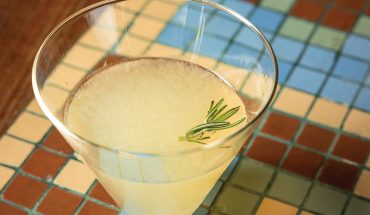Chef Sean Fowler shares his tips and tricks for using seasonal produce.

There are a number of notable ingredients that mark the beginning of spring—peas, shad roe, strawberries, asparagus—but I would argue that none do so with such emphatic certainty as ramps. For this chef, spring has not truly sprung until the first ramps arrive in Mandolin’s kitchen, providing some unsuspecting young cook a full shift of cleaning and processing them. Many chefs consider ramps the crown jewels of wild, foraged ingredients. Allium tricoccum, commonly called ramps, are wild onions that resemble scallions, but with flat, pointed, green leaves. They taste like a combination of a wild onion and garlic, but their flavor softens significantly upon cooking. Ramps are native to Eastern North America and grow prolifically in the mountains Western North Carolina. They are deeply embedded in Appalachian culture, food and folklore. When conditions are favorable, they poke their delicate green tops up for about a six-week period in April and May. Each year in April, I make the annual pilgrimage to Avery County, where an old friend loads me up with generous piles of them, double-wrapped in Hefty bags and stuffed into styrofoam coolers. By the time I arrive back to Raleigh after a ramp run, there is no doubt how these onions earned the nickname “little stinkers.” Even with the double bagging and sealed coolers, their pungent odor has begun soaking into my pores.
Despite their powerful smell, these little gems are delicious. They are the perfect partner for our fresh eggs from Mandolin Farm. I also love throwing them on a hickory fired grill with a squirt of lemon and serving them on top of a giant ribeye. I use fresh ramps in any number of ways throughout the spring and use preservation methods to extend their menu life into the fall. Many people might still be asking, “Why are chefs so obsessed with ramps?” Sure there is no denying their unique flavor, but it is also the allure of a wild ingredient combined with their short growing season and limited availability. To boil it down to simple economics: scarcity builds demand. Because of their growing popularity, ramp populations have been over-harvested in many areas, especially the perimeter of their growing regions. At Mandolin, we use ramps that are sustainably harvested on private land, we have zero waste and despite our enthusiasm about this wild ingredient, we do use them in moderation.

Pan Seared Ramps and Shiitakes with English Peas
Ingredients:
2 tablespoons soybean oil
6 ramps, green tops removed from the white bulbs
5 ounces of shiitakes, cut into ¼ “strips”
¼ cup vegetable stock
¼ cup English peas
2 tablespoons sour cream
1) If your ramp bulbs are bigger around than a penny, you can cut them in half, lengthwise. In a large sauté pan, heat up 1 TBS of the oil over high heat. When the oil is almost smoking, place your ramps bulbs (reserve the greens) into the pan. Cook for about a minute on the first side and flip the ramps with a pair of tongs.
2) Add another TBS of oil and the shiitakes to the pan. Cook for another minute and then toss the ingredients a few times. Add the ramp greens and cook them, moving them frequently, for about 30 seconds.
3) Cut the heat to medium, add the vegetable stock and peas to the pan, and simmer for another minute. Season with salt and pepper.
4) Remove the pan from the heat and let it cool for 20 seconds and then add the sour cream to the pan, tossing the vegetables to glaze them.
This is a great side dish for a pork chop or pan-seared trout, or serve it for breakfast with over easy eggs and toast.



